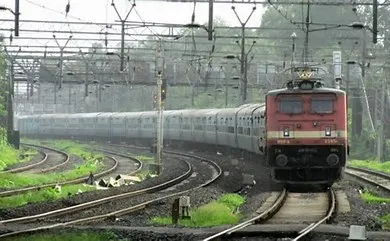Srinagar, July 7, 2024 — The holy month of Muharram, marking the beginning of the Islamic lunar calendar, is set to commence in Kashmir on July 8. This period is significant for the Muslim community, particularly Shia Muslims, who observe ten days of mourning in remembrance of the martyrdom of Imam Hussain, the grandson of Prophet Muhammad, and his followers at the Battle of Karbala in 680 AD.
In preparation for Muharram, extensive arrangements have been made across the region to facilitate peaceful and orderly observances. Security has been significantly heightened in major towns and cities, with police and paramilitary forces deployed to ensure the safety of participants. Checkpoints have been established at key locations to manage the flow of people and prevent any untoward incidents.
The government, in collaboration with religious and community leaders, has outlined a series of guidelines to ensure that the rituals are conducted smoothly and respectfully. Authorities have emphasized the importance of maintaining communal harmony and respecting the sentiments of those observing Muharram. Residents are urged to cooperate with security personnel and adhere to the prescribed guidelines.
Traditional processions, known as ‘Julus’, will be held in various parts of Kashmir, with the largest gatherings expected in Zadibal, Srinagar. These processions are characterized by the recitation of elegies, the beating of chests, and other forms of mourning. Special prayers and sermons will be conducted in mosques and Imambaras, where religious scholars will recount the events of Karbala and the significance of Imam Hussain’s sacrifice.
The ten days of Muharram hold immense significance for the Shia Muslim community in Kashmir. During this period, various traditional processions, including ‘Julus’ and ‘Matam’, are carried out with fervor and devotion. Large numbers of people converge in Shia-majority areas to participate in these mourning rituals, which include the ceremonial practice of ‘Zanjeer Zani’ (self-flagellation with chains).
In anticipation of the Muharram observances, the district administration has ensured that all necessary facilities are in place. Officials have conducted thorough inspections of every Imambara and reviewed all preparations to guarantee the smooth conduct of events. The administration’s efforts aim to provide a conducive environment for mourners to partake in the rituals without hindrance.
Among the various processions, the most significant takes place on the 10th of Muharram, known as Ashura. On this day, thousands of mourners gather for the grand procession in Zadibal, where symbolic representations such as Zuljanah (a replica of Imam Hussain’s horse) and Alam Shareef (religious flags) are displayed. This procession witnesses the participation of a large number of devotees, making it a pivotal event in the Muharram observances.
The 8th of Muharram holds historical importance due to the traditional procession that starts from Guru Bazar and culminates at the Imambara in Dal Gate. This procession had been banned for 35 years due to recurring law and order issues. However, in 2023, the procession was allowed to resume as the security situation in Kashmir improved. The lifting of the ban was met with joy and gratitude from the Shia community, who appreciated the central government’s efforts. This event symbolized a significant shift in the region, showcasing the developments that have occurred since the abrogation of Article 370.
Overall, the resumption of the 8th Muharram procession and the meticulous arrangements for Muharram observances reflect the administration’s commitment to ensuring the religious freedoms and cultural practices of the Shia community in Kashmir. These efforts not only honor the historical and religious significance of Muharram but also foster a sense of unity and resilience within the community.
In addition to the religious observances, community kitchens, or ‘Langars’, will be set up to provide free meals to participants, reflecting the spirit of charity and solidarity that is central to Muharram. Volunteers from various organizations will be actively involved in managing these services and ensuring that the needs of the participants are met.
The administration has also ensured that essential services such as electricity, water supply, and medical facilities are adequately provided during this period. Special arrangements have been made for the smooth movement of processions, with traffic diversions and public transport facilities in place to accommodate the increased flow of people.
Muharram in Kashmir is not only a time of mourning but also a period of unity and resilience. It serves as a reminder of the values of sacrifice, justice, and perseverance, as exemplified by Imam Hussain and his followers. As the community comes together to honor these values, the region stands in solidarity, reflecting the enduring spirit of Kashmir.
The observance of Muharram will culminate in Ashura, the tenth day, which is the most significant day of mourning. On this day, processions will reach their peak, with thousands of participants taking to the streets to pay their respects. The administration is committed to ensuring that these observances are conducted in a peaceful and dignified manner, honoring the profound historical and religious significance of Muharram.












